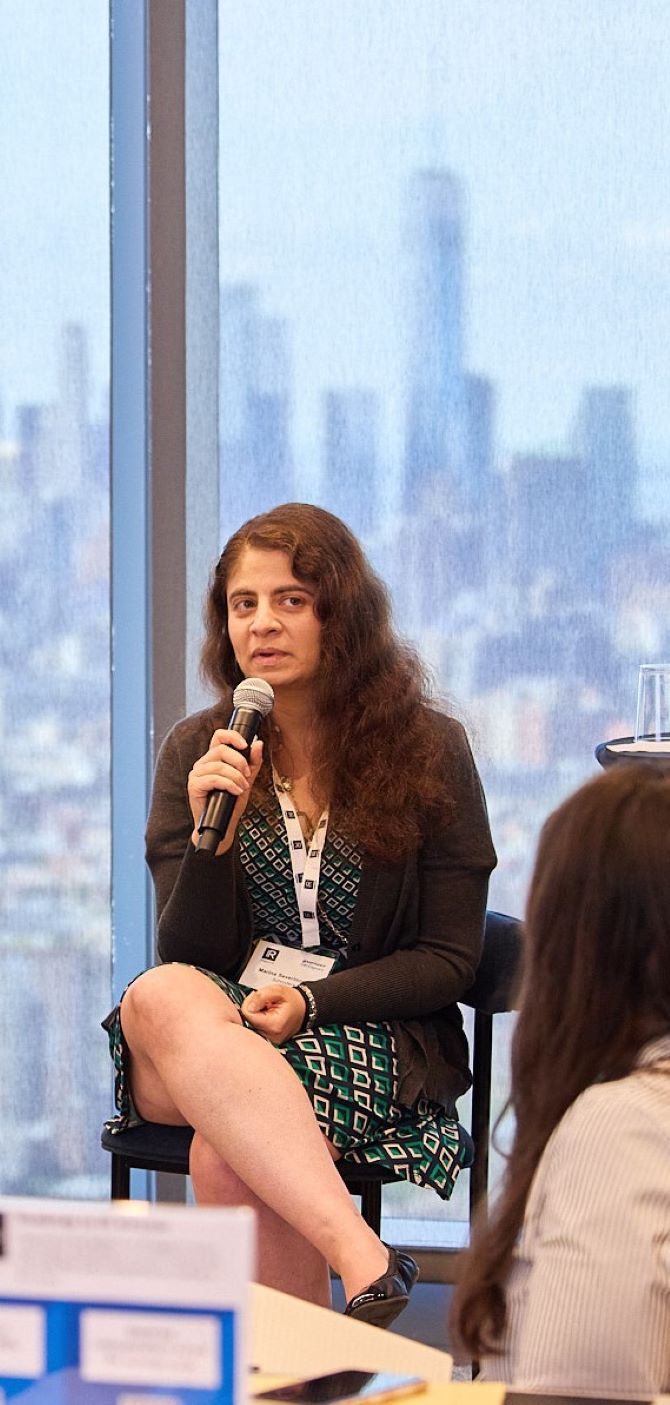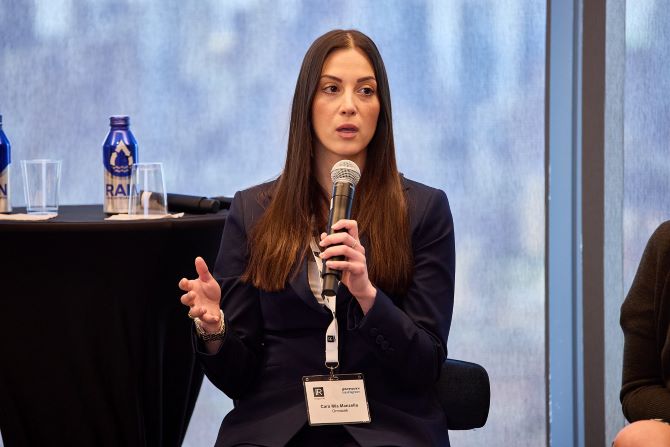Governance, sustainability and leading IR professionals, gathered at the IR Magazine ESG Integration Forum – Summer in New York last week to share their views and expertise on ESG issues facing US companies and their investors today.
One of the sessions considered how attitudes around ESG are changing, the reasons behind the change and what it means for publicly listed companies.
Steven Wade, head of content at IR Magazine, was joined by Cara Mia Manzella, manager of ESG program at Ominicell, Shanu Mathew, senior vice president, portfolio manager and US sustainable equity analyst at Lazard Asset Management and Marina Severinovsky, head of sustainability at Schroders North America.
The ‘teenage years’ of ESG
Asked to offer his view on how ESG is changing, Mathew identified three phases in its evolution.
‘Phase one is identification and attention to the issues,’ he said. ‘It’s describing why investors, companies, corporates and governments should care about these issues, why they are relevant and why they need to be addressed. Phase two is starting to put out initial targets or commitments around issues that are topical to the company and how they are planning to address it. Phase three is all about implementation.’

The latter phase is, according to Mathew, the phase most businesses are in right now, where data collection, reporting and investor engagement are happening at various levels among different entities. The goal is for companies to move toward providing decision-relevant information on climate, diversity, governance and other issues that matter to investors.
As for ESG skepticism and backlash, Mathew said this is somehow ‘healthy’ as it’s motivating businesses to refine their data-collection and data-delivery processes. ‘An analogy is that we are in the teenage years of ESG, where things are turbulent and may tend to go two steps forward but one step back,’ he pointed out. ‘Ultimately, in five to 10 years’ time, I believe we will be in a better place than we are now.’

Severinovsky defined the ESG evolution as a ‘maturation’, which involves redefining the purpose of collecting sustainability-related data and asking ESG-related questions. Addressing companies, she said investors ‘want to understand how you are thinking about risks and opportunities to your business and then how you are reporting back to us – that’s really it.’
Explaining how her company navigates the pushback against ESG, she explained that Schroders is thinking carefully about how it uses the term ESG in its communications. ‘We are almost not using the term anymore because, as investors, we feel the pushback very strongly, even more than corporates do, especially politically,’ she said.
Manzella, who manages the ESG program at pharmaceutical company Omnicell, said the evolution of her company’s approach to ESG has been significant.
‘We’re taking larger and larger steps than we ever have [and are] in the process of conducting a double-materiality assessment to understand our most material impacts, risks and opportunities,’ she noted. ‘We’re working on translating our ESG report so that it can go in our international tenders as that is something really important when we’re looking to win business.’

In relation to the pushback, Manzella said it hasn’t deterred internal progress: ‘Sometimes there is the misconception that ESG does not have positive business outcomes and it’s a nice to have, an extra, but that’s not the case. [On] the anti-ESG [backlash], or ESG going backwards, while we do see that happening from a perspective of how people’s attitudes might be shifting, that’s actually not impacting us as an organization; if anything, the opposite is happening.’
The macroeconomic impact on ESG
Throughout the discussion, panelists acknowledged the broader economic and regulatory forces influencing ESG agendas. They recognized the challenges of balancing short-term economic pressures with long-term sustainability goals but emphasized the strategic imperative for companies to proactively integrate ESG considerations into their corporate DNA.
The macroeconomic environment ‘plays a big part’, said Mathew. During economic hardship, he believes companies must focus on core functions to survive, sometimes scaling back on non-essential investments. Taking energy companies as an example, he said those businesses may want to prioritize energy security over green investments at this time, due to immediate needs and market signals.
‘The macro cycle will influence the rate at which you’re investing in certain objectives and the rate at which you prioritize those objectives,’ he explained. ‘At the end of the day, if the company doesn’t generate commensurate return on investments, there is less likelihood it can survive for the long term and have the chance to make a positive impact on all of its stakeholders.’
Severinovsky agreed that near-term macroeconomic headwinds should not be ignored, but stressed that there are inevitable long-term trends that cannot be overlooked.
‘Decarbonization, deglobalization and demographic shift [are] things [that] are not going anywhere,’ she noted. ‘Whether it’s human rights, human capital, there will be things you have to concern yourself with and you have to look through the market cycle to some degree. We understand where today is, or six months from now, but we’re long-term investors and our pension plan clients are 30 to 40-year [investors so] we’re trying to stick with companies for the long run.’
Manzella noted that it’s important for companies to find the right balance between ESG initiatives and cost-saving efforts. ‘I know sometimes there can be a tradeoff between ESG and cost, but what we’ve tried to find is that sweet spot where our ESG initiatives are actually yielding cost savings, which is a way to get everyone in the company on board,’ she said.
Switching the buzzwords
Sharing their best practice advice with attendees in the room, speakers said integrating ESG principles throughout an organization with strong regulatory awareness will ultimately drive meaningful progress and preserve shareholder value.
On managing ESG pushback, Manzella said there may be a difference between asking people how they feel about reducing greenhouse gas emissions and asking them how they feel about reducing pollution – the latter may resonate more. Sometimes, she said, it is all about ‘tuning into your audience and switching the buzzwords.’
For Mathew, the future is all about having constructive dialogues. ‘It’s ultimately how we all make this data more decision-useful for each other, so we can agree or disagree and debate the issues that can fundamentally drive favorable financial outcomes and progress on all these ESG topics,’ he said.
For Severinovsky, the fundamental questions the buy side asks will always be around preserving and enhancing shareholder value – and that will remain unchanged. Investors’ questions will continue to focus on specific themes and move further away from vague references.
‘I think you’re going to see more of that kind of specialization,’ she noted. ‘And I think hopefully we can tie things back again to, We are here as investors and here’s why we care about this.’










